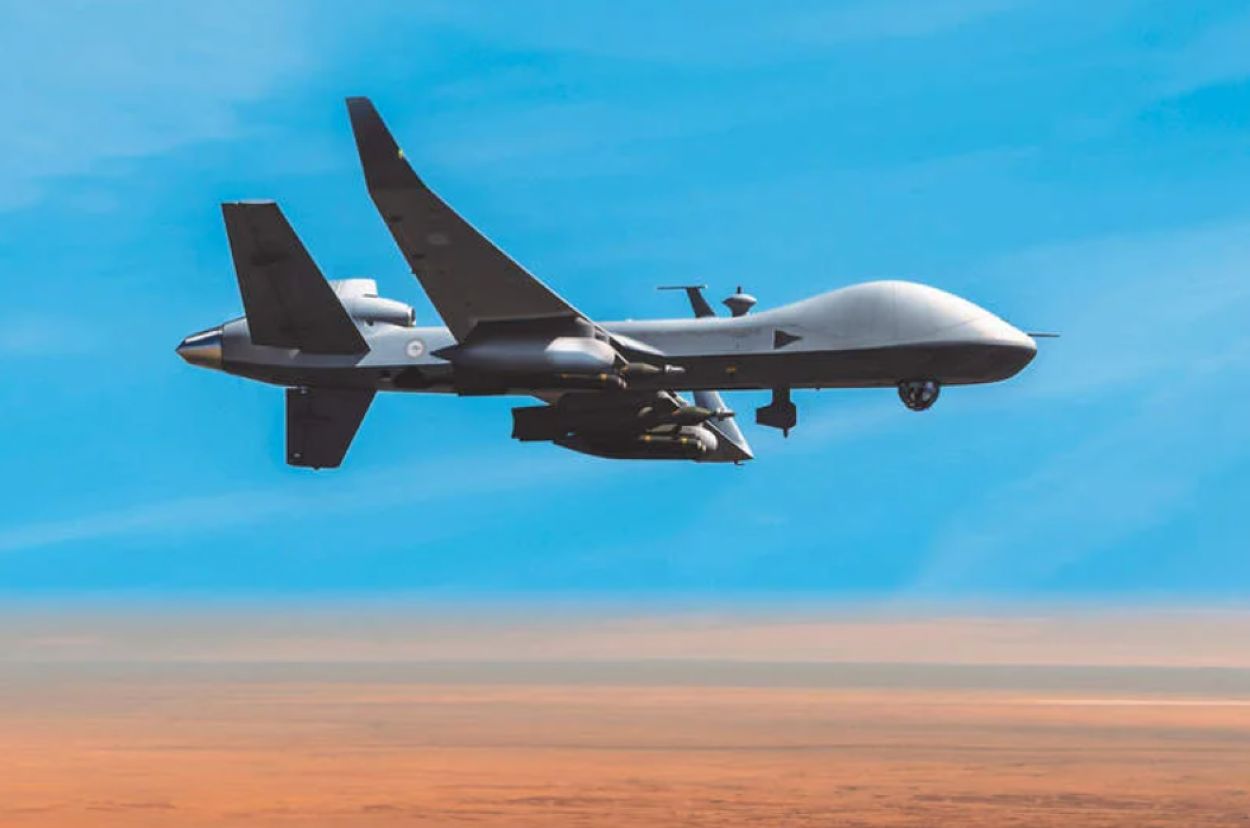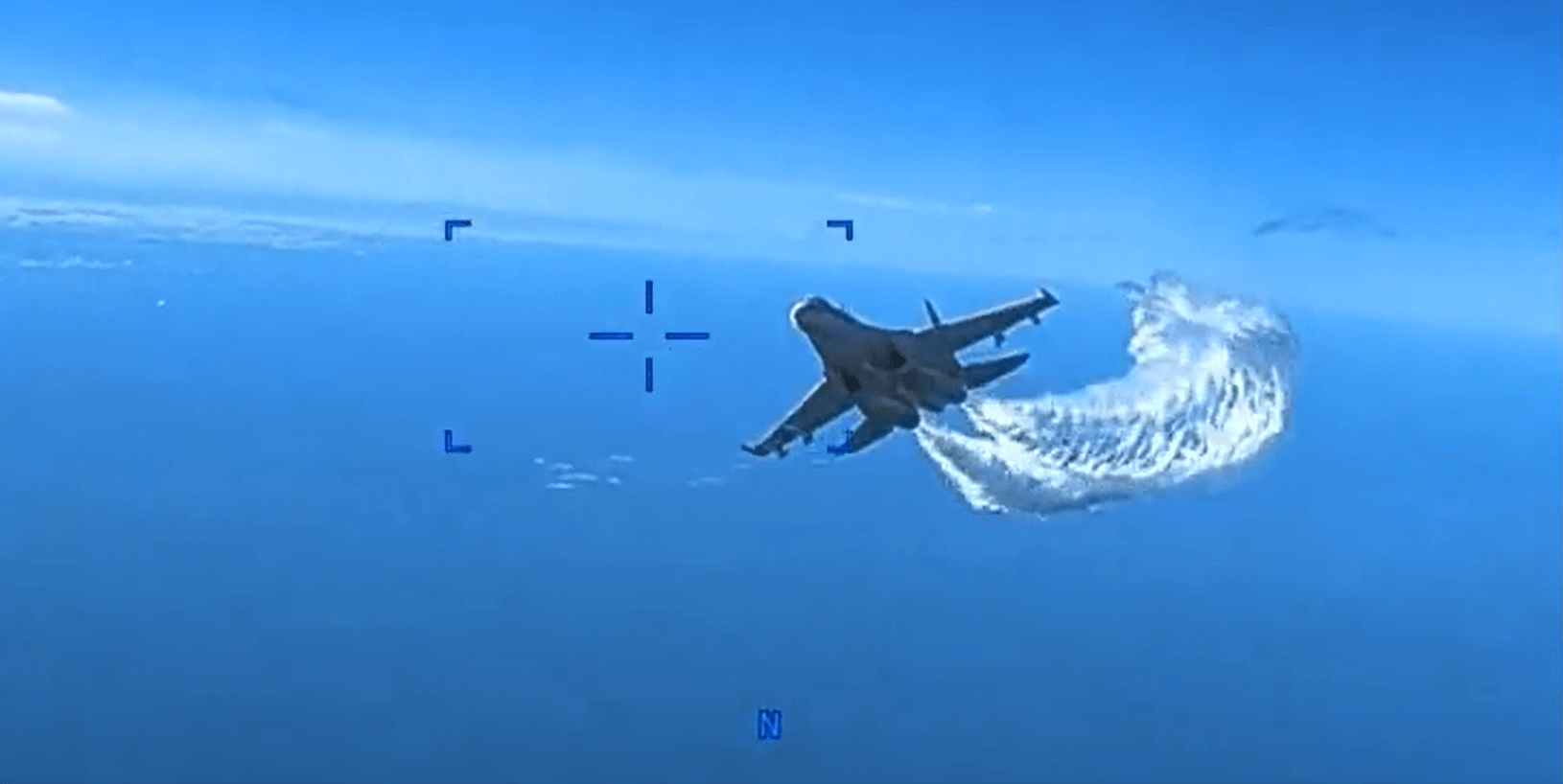Russia has recovered the downed American MQ-9 Reaper unmanned aerial vehicle (UAV) from the Black Sea and is studying its satellite navigation, electronic intelligence gathering systems, optical devices, and data-linking devices, according to a local Russian language media claim.
Recovered or not is a different story and cannot be independently verified for now, however, the Russian-language report citing its “sources” talks about features that Russian scientists are decoding.
An interesting read to understand Reaper’s features from the Russian perspective.
Earlier, a Russian Su-27 fighter dumped fuel on the drone’s top, according to a video released by the Pentagon on March 15, forcing it to be brought down into the Black Sea.
US and NATO aircraft like the E-3 Sentry Airborne Warning and Control System (AWACS), RC-135 Rivet, E-8 Joint Surveillance Target Attack Radar System (Joint STARS), and the RQ-4B Global Hawk UAV regularly fly reconnaissance missions over the Black Sea and Europe, gathering electronic intelligence (ELINT) on Russian radar locations.
According to Moscow, these planes also share the data with the Ukrainian military, which plans drone attacks inside Russian territory and Crimea by finding gaps in radar coverage.
A previous article in the EurAsian Times pointed out how the downing of the UAV and the subsequent suspension of flying has severely affected American surveillance capability in the Black Sea.
Russia Will Study MQ-9’s Optical, Satellite Control Systems
A report in Dzen.ru claimed that the MQ-9 Reaper was “successfully raised from the bottom (of the Black Sea) by the Russian military.” Saying that “the Americans were confident that the Russian military would not dare touch the drone and underestimated the Russian ingenuity,” it became a “legitimate trophy of the Russian military (because) of its onboard electronics that allowed for reconnaissance at considerable distances.”
It added that Russian specialists got an opportunity to study the “optoelectronic complex (or the swiveling electro-optical system seen under the nose); a complex of surface electronic intelligence apparatus; wiring of the microwave units; secure satellite communications and; the data exchange system terminal.”
The report quoted the director of the Air Defense Forces Museum, Yuri Knutov, who listed the advanced technologies present in the drone, suggesting these are the ones the Russians are likely to study.
Knutov said the drone is capable of reconnaissance and reconnaissance-strike functions, where it can be controlled at extremely long distances of thousands of kilometers. This is achieved via a highly sophisticated satellite control that relays flight commands from the ground control station to the UAV and a Global Position System (GPS) in its communications architecture, besides just navigation.
The UAV’s electronic intelligence equipment, which records the frequencies of Russian air defense radar stations, and radio communications with which the Americans locate command posts and field headquarters, are “of interest because these are new technologies, quite serious ones.”

Link 16 Data Sharing Technology Compromised?
Another post on a Russia-friendly Telegram group that went around on a few pro-Ukrainian channels and the assessment of a former Indian Navy Commander of the Air Electrical Branch largely aligned with Knutov’s analysis.
Saying the Russian military retrieved the MQ-9 Reaper from a depth of 600 meters, the post said there is a concern in US military circles about the Link 16 data linking system installed on the UAV.
“The encrypted tactical transmission channel is a key element of Western compatibility, as it is included in NATO intelligence systems,” said the post.
Every American frontline fighter, strategic bomber, tactical platforms like the AH-64E Apache, the special surveillance aircraft mentioned earlier, and European fighters like the Mirage-2000, Dassault Rafale (France), SAAB Gripen, Eurofighter Typhoon, and the Tornado ground attack aircraft use the Link 16.
“In Russia, there is no such system, and scientists must understand the scientific principle on which the Link 16 operates. Firstly, this will allow you to create your own analog closed communication and control systems quickly. Secondly, it is necessary to find out Link 16’s shortcomings,” said the message.
Adding that Western and American military planners have resigned to the fate of Link 16 possibly being compromised, they are presumably engaged in developing other alternative methods of transmitting and encrypting information.
Russia Will Address Weakness In Electronics
Retired Indian Navy officer Commander (Dr) Jayakrishnan N. Nair, with extensive experience with Russian aircraft like the Tupolev Tu-142 and the Boeing P-8I Poseidon maritime reconnaissance aircraft, said the Russian engineers are likely to study every system that has “electronic emissions.” This includes Electronic Intelligence (ELINT) devices that spy on Russian radar frequencies, radio control, navigation, and data links.
Nair, who is also the CEO of Defense Research and Studies (DRaS), explained that countries typically reverse engineer technologies they are traditionally weak in, and without particular reference to the Reaper incident, points to Russia having historically lagged in computer electronics, chips, and electronic hardware.

“This includes Printed Circuit Boards (PCB), microcontroller boards, Integrated Circuits (IC), or Very Large Systems Integration (VLSI). Russians are excellent systems integrators, where their final machine, upon assembling the various imported components and electronics, is extraordinarily advanced. They lead in metallurgy and renowned mechanical engineering,” Nair added.
According to Nair, Russia always imported these systems from the US and Europe. With sanctions now having stopped their sale to Moscow, the evolution and adaptability of the Russian defense industry should be closely watched.
A serving Indian Air Force official requesting anonymity said – There is no evidence of Russia seizing the MQ-9 Reaper drone. We are witnessing the biggest information war involving Ukraine and Russia, and without credible evidence, we should take everything with a pinch of salt.
- The author can be reached at satamp@gmail.com
- Follow EurAsian Times on Google News




